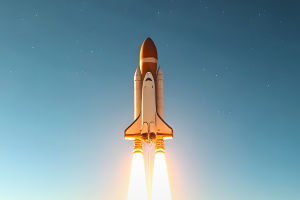Demystify Scientific Method
Science is all about curiosity, discovery, and building knowledge step by step. But how do scientists make sure their findings are accurate, repeatable, and trustworthy? The answer lies in the scientific method—a structured process that guides investigations and separates fact from assumption.
This method is not just for professional scientists; it’s a logical approach that anyone can use to solve problems and test ideas. Whether you’re asking why the sky looks a certain color, testing a recipe, or designing an experiment in school, the scientific method provides a clear path forward. In this guide, we’ll break it down into understandable steps and show how it’s applied in everyday life.
The Core Steps Explained
At its heart, the scientific method is a cycle of asking questions, testing ideas, and learning from the results. Each step builds on the last, helping ensure accuracy and objectivity.
Ask a Question
Everything starts with curiosity. You notice something and want to understand why it happens. The question should be specific, such as “What makes plants grow faster?” rather than “How do plants work?”
Do Background Research
Before diving in, scientists review what’s already known. Reading studies, gathering observations, and consulting credible sources helps refine the question and avoid repeating work that’s already been done.
Form a Hypothesis
A hypothesis is an educated guess, framed as a testable statement. For example: “Plants given more sunlight will grow taller than plants given less.” It sets the stage for the experiment.
Test with an Experiment
Experiments provide evidence to support or challenge the hypothesis. They must be carefully designed with controlled variables—changing one factor at a time while keeping others consistent. This ensures the results are reliable.
Analyze the Data
Once the experiment is complete, the next step is examining the results. Scientists look for patterns, averages, or unexpected outcomes. Numbers, charts, or comparisons help make sense of the findings.
Draw a Conclusion
The conclusion answers the original question. Did the results support the hypothesis, or did they suggest something different? Either way, the conclusion adds to knowledge and often sparks new questions.
Share Results
Science is collaborative. Publishing findings, presenting data, or simply sharing with classmates allows others to review, replicate, and build upon the work. Transparency strengthens trust in the results.
Why It Matters Beyond the Lab?
The scientific method isn’t just for researchers in white coats—it’s a valuable tool you can use in everyday life.
Problem-Solving at Home
Think about when you try a new cleaning solution or cooking method. You’re observing, testing, and adjusting, just like a scientist. The process helps you figure out what works best without relying on guesswork.
Critical Thinking Skills
Using the scientific method encourages you to question assumptions and seek evidence before drawing conclusions. This mindset helps in debates, decision-making, and evaluating information you see online.
Innovation and Discovery
Every major invention—from lightbulbs to smartphones—has roots in the scientific method. Testing ideas, analyzing outcomes, and learning from failures drive progress. Embracing this process can fuel creativity in any field.
Teaching Curiosity
For children, learning the scientific method builds confidence in asking questions and exploring answers. It fosters a sense of wonder and shows that mistakes are simply steps toward deeper understanding.
The scientific method is more than a checklist—it’s a way of thinking. By asking questions, forming hypotheses, experimenting carefully, and analyzing results, we create knowledge that is trustworthy and repeatable. Beyond laboratories, the method helps with everyday problem-solving, encourages critical thinking, and inspires innovation. It reminds us that curiosity is powerful and that mistakes are part of discovery. Whether you’re growing plants, solving daily challenges, or exploring big scientific questions, the scientific method offers a clear, reliable path to learning and progress.
Copyright © zogu 2021 - 2025. All Right Reserved.


